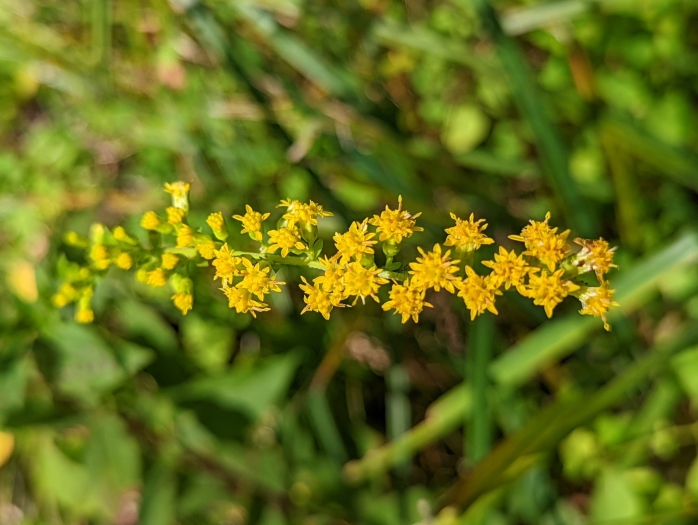Atlantic Goldenrod
(Solidago arguta)
Atlantic Goldenrod (Solidago arguta)
/
/

© Elias
CC BY 4.0
Image By:
© Elias
Recorded By:
Copyright:
CC BY 4.0
Copyright Notice:
Photo by: © Elias | License Type: CC BY 4.0 | License URL: http://creativecommons.org/licenses/by/4.0/ | Uploader: elias105 | Publisher: iNaturalist |

























Estimated Native Range
Summary
Solidago arguta, commonly known as Atlantic Goldenrod, Cut-leaf Goldenrod, and Sharp-leaved Goldenrod, is a perennial herb that is native to a variety of habitats including open woodlands, forest edges, meadows, and prairies across eastern and central North America, from the Gulf and Atlantic states of Texas to Maine, extending inland to Ontario, Illinois, and Kansas. This species typically reaches heights of 2 to 5 feet (0.6 to 1.5 meters) and is characterized by its upright form and numerous small, bright yellow flowers that form dense, elongated clusters at the top of the stems, blooming in late summer to fall. The flowers are highly attractive to pollinators and are quite showy, making it a popular choice for naturalistic plantings.
Atlantic Goldenrod is valued for its ease of maintenance, adaptability to various soil conditions, and its ability to attract wildlife, particularly butterflies and bees. It is often used in wildflower gardens, borders, and as part of ecological restoration projects. It thrives in full sun to part shade and prefers well-drained soils but can tolerate a range of soil types, including clay. While generally not prone to serious pests or diseases, it can occasionally suffer from rust or mildew. Gardeners should be aware that some goldenrod species can be aggressive spreaders, but Solidago arguta is not typically invasive.CC BY-SA 4.0
Atlantic Goldenrod is valued for its ease of maintenance, adaptability to various soil conditions, and its ability to attract wildlife, particularly butterflies and bees. It is often used in wildflower gardens, borders, and as part of ecological restoration projects. It thrives in full sun to part shade and prefers well-drained soils but can tolerate a range of soil types, including clay. While generally not prone to serious pests or diseases, it can occasionally suffer from rust or mildew. Gardeners should be aware that some goldenrod species can be aggressive spreaders, but Solidago arguta is not typically invasive.CC BY-SA 4.0
Plant Description
- Plant Type: Herb
- Height: 2-6 feet
- Width: 1.5-2.5 feet
- Growth Rate: Moderate
- Flower Color: Yellow
- Flowering Season: Summer, Fall
- Leaf Retention: Deciduous
Growth Requirements
- Sun: Full Sun, Part Shade
- Water: Medium
- Drainage: Medium
Common Uses
Bird Garden, Border Plant, Butterfly Garden, Deer Resistant, Low Maintenance
Natural Habitat
Native to open woodlands, forest edges, meadows, and prairies
Other Names
Common Names: Southern Goldenrod, Cut-Leaf Or Sharp-Leaved Or Atlantic Goldenrod, Forest Goldenrod, Toothed Goldenrod, Cut-Leaf Goldenrod, Cut-Leaved Goldenrod, Sharp-Toothed Goldenrod, Sharp-Leaved Goldenrod
Scientific Names: , Solidago arguta, Aster argutus, Aster argutus, Solidago arguta f. arguta, Solidago arguta f. tomophylla, Solidago arguta var. neurolepis, Solidago boottii var. yadkinensis, Solidago dispersa, Solidago juncea
GBIF Accepted Name: